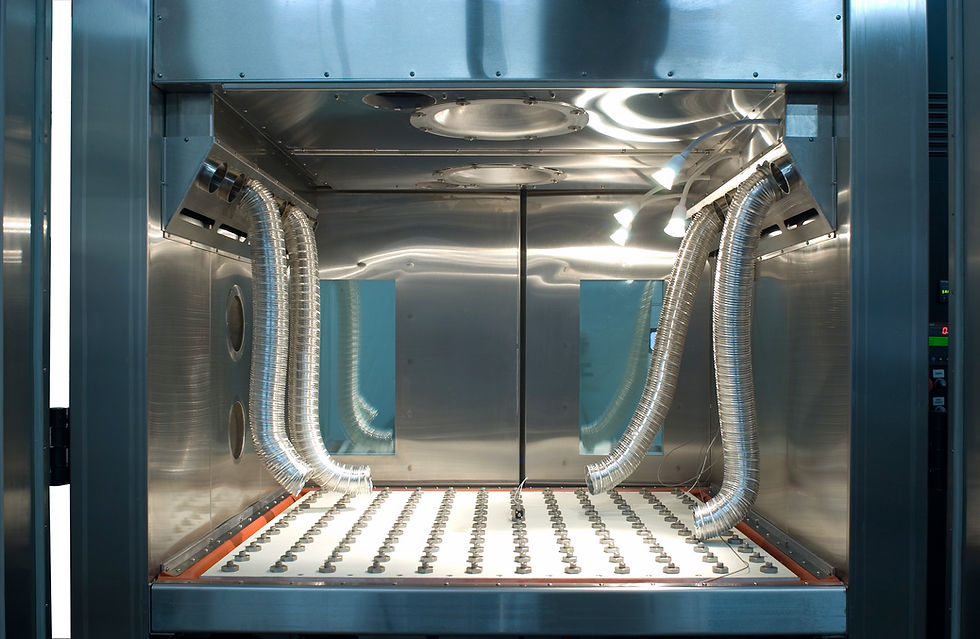Steps to Ensure Effective Stress Testing for Your Products
- Jul 28
- 4 min read
Stress testing is a critical process in product development and quality assurance. It helps identify weaknesses and ensures that products can withstand extreme conditions before reaching the market. For reliability engineers and technicians working across industries such as automotive, consumer electronics, military, aerospace, and test laboratories, mastering stress testing techniques is essential. This article outlines practical steps to ensure your stress testing is effective, reliable, and aligned with industry standards.
Understanding the Fundamentals of Stress Testing
Stress testing involves subjecting a product to conditions beyond its normal operating limits to evaluate its durability and performance. These conditions may include extreme temperatures, vibrations, humidity, electrical surges, or mechanical shocks. The goal is to simulate real-world scenarios that could cause failure, allowing engineers to identify potential issues early.
For example, in the automotive industry, components like sensors and control units undergo vibration and thermal cycling tests to mimic road conditions and engine heat. In aerospace, electronic systems are tested for electromagnetic interference and rapid temperature changes to ensure flight safety.
Key points to consider when planning stress testing:
Define the environmental and operational limits relevant to your product.
Use standardized test methods where applicable to ensure consistency.
Document all test parameters and results meticulously for traceability.

Best Practices for Conducting Stress Testing
Effective stress testing requires a structured approach. Here are essential steps to follow:
Identify Critical Components and Failure Modes
Focus on parts most likely to fail under stress. Use failure mode and effects analysis (FMEA) to prioritize testing efforts.
Develop Realistic Test Scenarios
Simulate conditions that the product will face during its lifecycle. For instance, consumer electronics might be tested for drop impact and temperature extremes.
Select Appropriate Testing Equipment
Use calibrated machines capable of replicating the required stress conditions accurately.
Establish Clear Pass/Fail Criteria
Define what constitutes acceptable performance and failure to avoid ambiguity.
Perform Repeated and Accelerated Tests
Accelerated life testing can reveal long-term reliability issues in a shorter time frame.
Analyze and Interpret Data Thoroughly
Use statistical tools to understand failure patterns and improve product design.
Incorporating these practices ensures that stress testing is not just a formality but a valuable tool for product improvement.

What is the Purpose of the ESS Test?
The ESS (Environmental Stress Screening) test is a specialized form of stress testing designed to expose latent defects in products by subjecting them to environmental stresses such as temperature cycling, vibration, and humidity. The primary purpose of the ESS test is to identify manufacturing defects and early-life failures that might not be apparent during normal testing.
For example, in military and aerospace applications, ESS testing is crucial because product failure in the field can have severe consequences. By applying the ESS test, manufacturers can ensure that only robust and reliable products reach the end user.
The ESS test also helps reduce warranty costs and improve customer satisfaction by catching issues before shipment. It is often integrated into the production process as a quality control measure.
For those interested in detailed procedures, the ess test procedure provides comprehensive guidelines on implementing ESS testing effectively.

Common Challenges and How to Overcome Them
Stress testing can be complex and resource-intensive. Here are some common challenges and practical solutions:
Challenge: Incomplete Test Coverage
Solution: Use risk assessment tools to identify all critical stress factors. Collaborate with design teams to understand product vulnerabilities.
Challenge: Equipment Limitations
Solution: Invest in versatile and calibrated testing equipment. Consider outsourcing specialized tests to accredited laboratories if needed.
Challenge: Data Overload and Misinterpretation
Solution: Implement data management systems and train staff in statistical analysis. Focus on actionable insights rather than raw data.
Challenge: Balancing Test Duration and Cost
Solution: Use accelerated testing methods and prioritize tests based on risk and impact.
By anticipating these challenges, engineers can design more efficient and effective stress testing programs.
Integrating Stress Testing into Product Development Lifecycle
Stress testing should not be an afterthought but an integral part of the product development process. Early integration helps identify design flaws before mass production, saving time and costs.
Steps to integrate stress testing effectively:
Design Phase: Incorporate stress test requirements into design specifications. Use simulation tools to predict stress responses.
Prototype Phase: Conduct initial stress tests on prototypes to validate design assumptions.
Pre-Production Phase: Perform ESS and other stress tests on pilot runs to catch manufacturing defects.
Production Phase: Implement routine stress screening as part of quality control.
Post-Production Phase: Analyze field data to refine stress testing protocols continuously.
This lifecycle approach ensures continuous improvement and product reliability.

Enhancing Reliability Through Continuous Improvement
Stress testing is a dynamic process that benefits from ongoing refinement. Use feedback loops from test results and field performance to update test scenarios and criteria. Encourage cross-functional collaboration between design, manufacturing, and quality teams to share insights.
Additionally, stay updated with industry standards and emerging testing technologies. For example, advances in sensor technology and data analytics can provide deeper insights into product behavior under stress.
By fostering a culture of continuous improvement, organizations can enhance product reliability and maintain competitive advantage.
Stress testing is a vital practice that ensures products meet the highest standards of durability and performance. By following these steps and embracing best practices, engineers and technicians can deliver products that stand up to the toughest conditions and exceed customer expectations.




